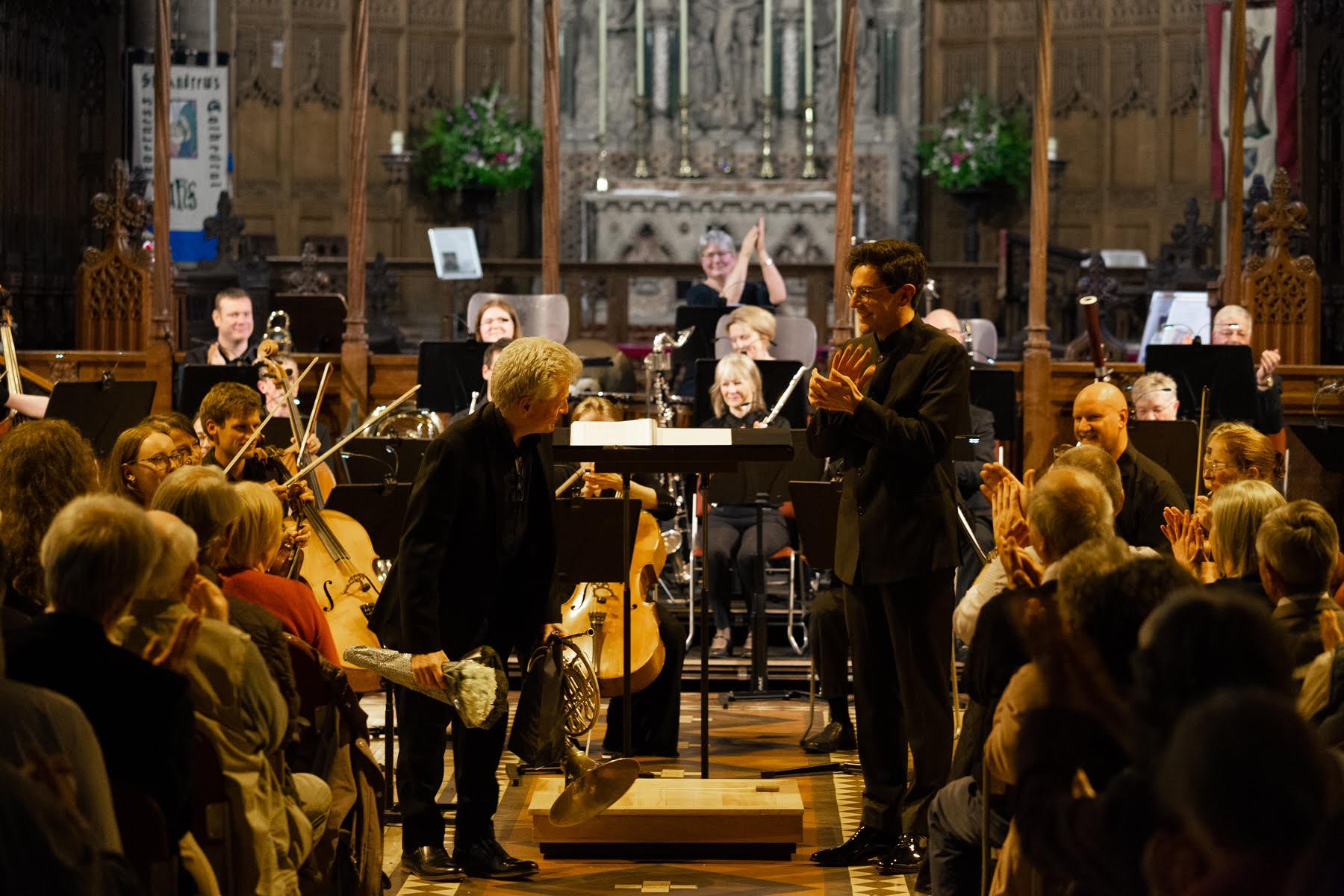The Mahler Players: Mahler’s Seventh Symphony
Inverness Cathedral - 18/06/22
A performance of a Mahler Symphony always has a sense of occasion about it. Depending on the context it can be a relatively rare event, and many of Mahler's epic symphonies are mountains of both music and mind.
Mahler's Seventh Symphony is arguably one of his most difficult both for the orchestra and the audience. Sitting between the gargantuan but more formal Sixth and the polychromatic vocal testament of the Eighth, the Seventh is very definitely a 'night' symphony in its overall tonality. It’s also the symphony where Mahler tries hardest to capture musically the wandering mind, memories and troubled thoughts of the melancholic soul. It sits on the cusp of late romanticism and early modernity, and its frequent changes of mood, tone and pace within movements means it bears a few listenings before it begins to 'take'. There are great earworms and whistleable tunes in there, but it takes time for human consciousness to absorb and process. At a length of around an hour and a half, it's a marathon of complexities and moods.
One can only admire the sheer chutzpah of a relatively poorly resourced semi-professional regional chamber orchestra even attempting such a fractal and steep musical gradient. But the Mahler Players were set up not just to be Classic FM, but a bit Radio Three, to not just spiritedly churn out the usual crowd pleasers, but to bring some of the more difficult parts of the repertoire to a Highland audience and play them well.
The clue is in the name, and on Saturday they performed the Highland premier of Mahler's most undervalued and under-rated symphony at Inverness Cathedral, 120 years or so after Mahler committed his frenetic, melodic Freudian stream of consciousness to the musical page. And they did so with a special chamber orchestra arrangement by the band's lead brass player, Rob Farmer.
Rob Farmer with conductor Tomas Leakey (photo: Sam Leakey)
Did they succeed, musically and artistically?
Applying the same rigorous criteria as I would to a performance of the great man's music by a fully professional national orchestra ( which is the level of criteria the ambitious and committed Mahler Players need and deserve ), I would say they attained the summit, but have not yet conquered the peak.
Overall the sound was rich, multi-coloured and multi-textured; an aural treat.The chamber orchestra arrangement was generally excellent and able to convey the great dynamic range of the piece, both the Titanic chasms and quartzite peaks, and the softest moonlight wistfulness in the work. Conductor and Mahler Players leader Tomas Leakey clearly understands and has a deep affection for this music.
The harp introduction and expansive strings of the slow melodic interlude of the first movement were simply beautiful. The distances between the horns at the start of the first nachtmusik a perfect call and echoing reply. The scherzo, spooky, manic and gothic by turn. The andante amoroso glided by like a bird, full of the pleasurable but haunted memories of remembered love. And the 'dawn' finale delivered in full the triumph over melancholia and the affirmation of life in all of its human complexities, joys and sadnesses.
But it wasn't perfect. There were a couple of horn errors at the start of both the first and second movements. And whether it was a product of the cathedral's unique acoustic or the arrangement, there were a few moments where the brass seemed to overpower the strings. The cowbells needed to be stronger and more impactful on the mood in the short quiet section in which they feature, and the violin solo section seemed strangely shortened.
But, all things considered, this was an assured and very good performance of a symphony that is difficult to perform, and whose timings and pacing have been historically argued over,. The enthusiastic applause at the end of this historic performance was thoroughly well deserved.
The Mahler Players have done extraordinarily well to position themselves as a hidden Highlands musical treasure over the last nine years, but the big question now is can they take that next step?
Can they become a national, not just a regional, treasure? And what will be necessary for them to make that final step? They certainly have the potential, and I hope the ambition to do so.
Something a little special is happening in the Highlands, folk of the metropolis!
Something special, indeed.
Cover photo: Sam Leakey
